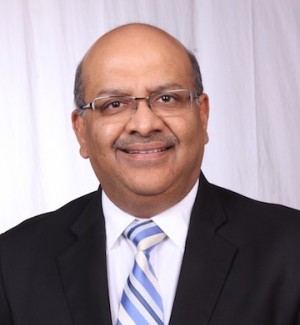Thanks to Covid-19, the hordes of steel executives who descend on New York in June each year from around the world to participate in the Steel Success Strategies (SSS) conference, made a virtual appearance this year instead of “in flesh and blood”. The SSS-2020, which was scheduled to take place in June, was held Oct.26-28 this year in the virtual theater.
While the conference raised all the relevant themes of interest to U.S. steel industry -the problems of steel imports, rising unemployment, climate change, reducing coal-generated pollution, markets, innovation, electric-powered cars and the autonomous automobiles, China’s steel exports, and the ubiquitous Covid-19 figured in many speeches and discussions – a special panel at the conference was dedicated to logistics.

Assessing the shipment traffic situation, Morrow said that demand for flatbed and dry van had dropped to “historical lows” during the Covid-19. “Dry van has meanwhile rebounded while flatbed growth was subdued by slow return of the industrial sector. There is no relief in sight as far as pricing is concerned. The industry faces a shortage of truck drivers. There is a shortage of some 60,000 drivers and this is going to grow possibly to between 100,000 and 160,000 in 10 years. Work is becoming stressful and unattractive for drivers, and this discourages many from joining the profession,” Morrow said.
Besides the acute driver shortage, which had caused capacity limitations, insurance premiums were hiked because of the rising number of accidents. This had forced many carriers out of business. He urged logistics companies to invest in Transportation Management System (TMS) which could help better manage their business.
He spoke of the benefits of developing an outsourcing logistics management strategy which can offer a flexible option allowing shippers to outsource everything, save costs since no staff costs or technology costs would be entailed, and other service benefits, etc.
It would also provide cost-saving benefits through inbound maintenance, repair and operation (MRO) freight management, and suppliers paying for and shipment of freight to shippers’ sites, etc.
While it is difficult for many to comprehend the driver shortage against the backdrop of high unemployment, Morrow explained that the biggest problem lay with the profession. “Truck driving is a difficult job because you are away from the family for a week or two at a stretch,” he said.
Would the launch of the autonomous car expected in 2024 mitigate the acute driver shortage? “Drivers will still be needed even if autonomous vehicles are introduced,” he said.
Logistics plays a crucial role in any industry, including the steel sector. Indeed, many shipping companies, port operators and other players have been traditionally participating in the SSS-conferences to “feel the industry’s pulse and be able to offer customized solutions for the industry,” as one logistics representative, who preferred to remain anonymous, told the AJOT. The presence of Port of Brownsville at the event illustrates that ports closely coordinate with the industry to improve and customize their service offers.
Growth in Asia – particularly in steel-producing countries China, India, Japan and South Korea - was also discussed since the continent is a heavyweight in global steel trade.
Vinay Shroff, Executive Vice President (sales/marketing) of Indian steelmaker, JSW Steel, provided insights on India’s huge market. Shroff said the Indian Government had “ambitious plans” for developing the country’s infrastructure which will generate robust demand for steel.

Shroff said that India is the world’s second largest steel producer; its steel production touched 111.2 million tonnes and consumption 101.5 metric tonnes in 2019/20 fiscal year. India, he said, was planning to allocate a total of $ 2 trillion for mega infrastructure projects within the next five years; the major investments will be earmarked for energy, roads/highways, railways, ports, airports, urban development, digital communication, etc.
Some of India’s mega projects, that could produce good demand for steel, include the extensive Bharatmala network of roads across the country, the North-West, East-West and southern corridors, logistics parks, a gigantic freight corridor across India, etc. The Sagarmala is another mega infrastructure project. A heavy-haul rail corridor will connect Talchur with Paradip Port, a freight expressway, road and rail connectivity, multimodal logistics hub, etc. are major elements of the infrastructure development program.
Other mega projects include the Mumbai-Ahmedabad high speed rail link, and a 700-km long expressway connecting Maharashtra state on the west coast to India’s central region.


